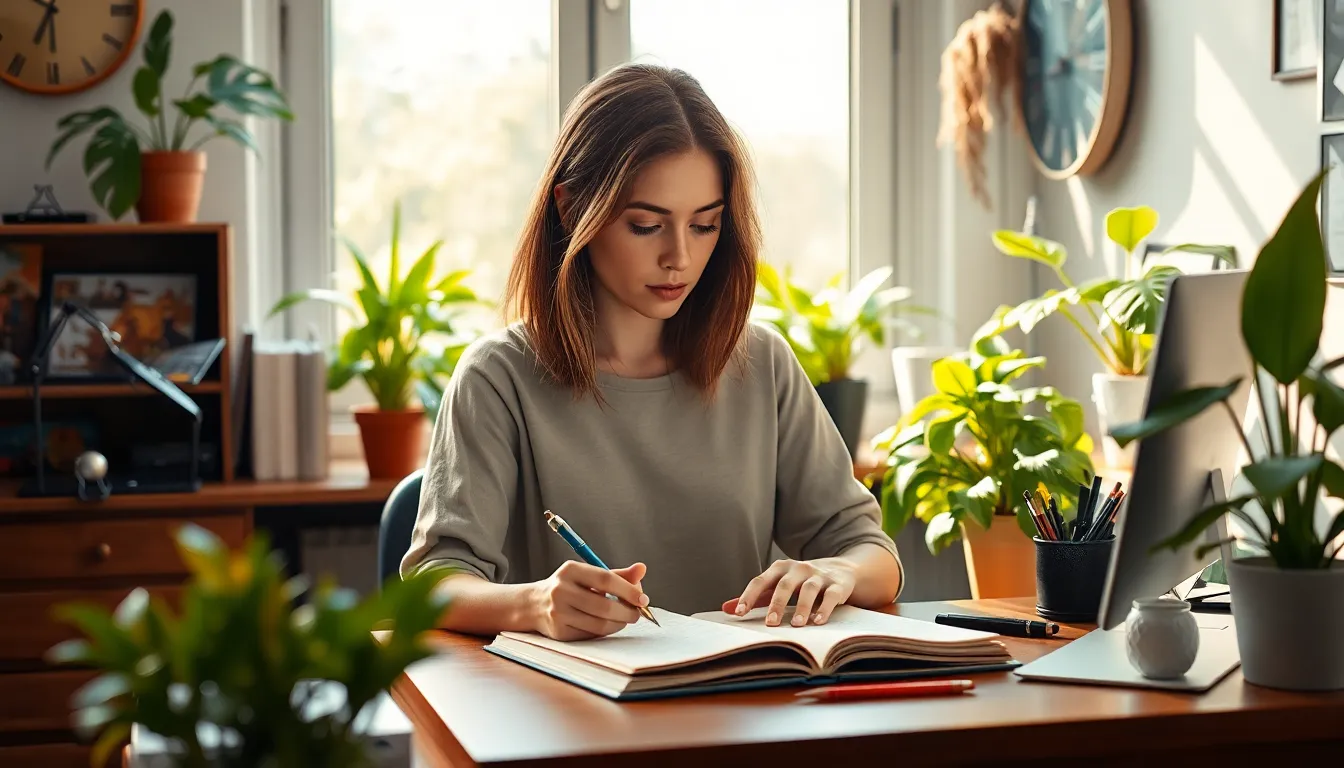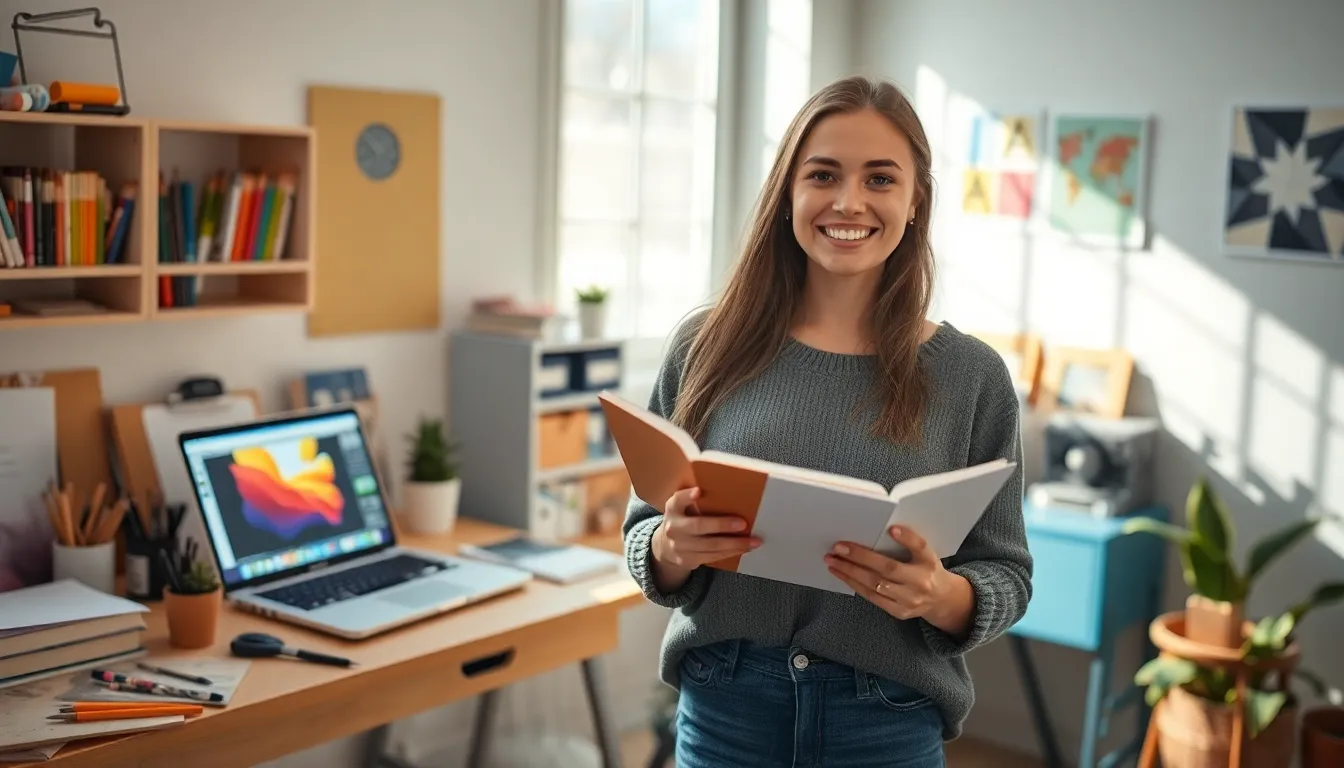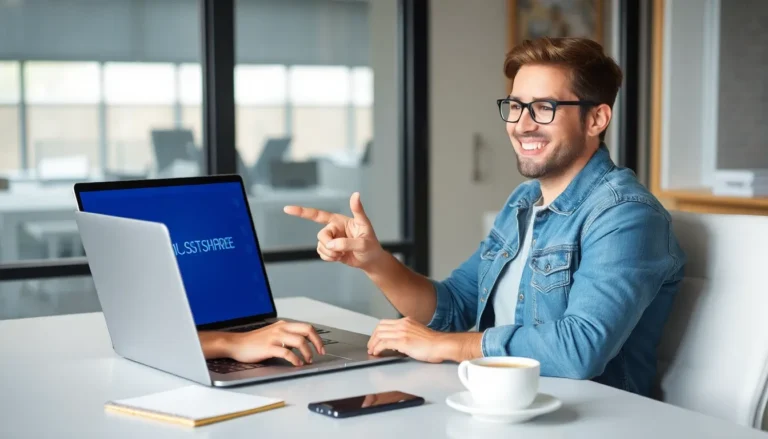Table of Contents
ToggleCreative blocks can feel like running into a brick wall while riding a unicycle—frustrating and downright confusing. Every artist, writer, and thinker knows that sinking feeling when inspiration takes an unexpected vacation. But fear not! There’s a treasure trove of quirky and effective block breakers just waiting to be discovered.
Understanding Creative Blocks
Creative blocks represent a significant barrier in the pursuit of artistic expression. Many individuals, including artists, writers, and designers, experience these moments when ideas seem completely inaccessible. Various factors contribute to the onset of creative blocks, such as stress, perfectionism, and self-doubt. Stress often arises from external demands, while perfectionism may inhibit creative flow by instilling fear of failure.
Effective strategies exist to mitigate these blocks. Incorporating regular breaks into the creative process helps to refresh the mind. Another beneficial practice involves exploring new environments, as a change in scenery can stimulate inspiration. Many creative individuals find that engaging in physical activity, such as walking or yoga, facilitates a mental reset.
Creative blocks can appear unexpectedly, leaving one feeling disheartened. Understanding their nature is crucial for overcoming them. Awareness of personal triggers aids in developing tailored solutions. Additionally, surrounding oneself with supportive peers often provides motivation and encouragement.
Practicing mindfulness techniques, such as meditation or journaling, enhances awareness of one’s thoughts and feelings. This introspection can lead to breakthroughs in creativity by identifying underlying issues. Ultimately, recognizing that creative blocks are a common experience enables individuals to approach them with patience and resilience. Strategies to combat these challenges can transform frustration into creativity, allowing for renewed artistic expression.
Common Causes of Creative Blocks

Creative blocks often arise from various factors that hinder inspiration. Understanding these causes can help address and overcome them effectively.
Psychological Factors
Stressful situations can trigger creative blocks. Anxiety often cripples one’s ability to think outside the box. Perfectionism creates an unrealistic standard, making individuals hesitant to share their work. Self-doubt undermines confidence, causing paralysis in the creative process. Additionally, fear of criticism can lead to avoidance of creative endeavors altogether. Identifying these psychological triggers enables individuals to confront them, paving the way for creative breakthroughs.
Environmental Influences
A cluttered workspace may stifle creativity. Uninspiring surroundings can diminish motivation, leading to stagnation. Constant distractions, such as noise or interruptions, disrupt focus, crippling the flow of ideas. Lack of exposure to new experiences can result in creative stagnation. On the other hand, a refreshing environment can stimulate creativity. By modifying their surroundings, individuals can enhance their creative potential and promote a more productive mindset.
Effective Creative Block Breakers
Creative blocks can be challenging, but employing specific techniques and tools enhances the potential for breakthroughs in artistic expression.
Techniques to Spark Creativity
Engaging in brainstorming sessions can generate fresh ideas. Switching to a different medium, such as drawing instead of writing, often encourages new perspectives. Setting a timer for short intervals fosters focused creativity without overwhelming pressure. Using prompts can also ignite inspiration; these can range from visual art cues to writing exercises. Exploring free association, where thoughts flow without censorship, unlocks hidden insights. Lastly, collaborating with others often results in unique solutions, as diverse opinions contribute to enhanced creativity.
Tools to Overcome Mental Barriers
Utilizing creative software like MindMeister or Trello aids in organizing thoughts visually. Integrating mobile apps such as Notion provides instant access for jotting down ideas on-the-go. Listening to music or soundscapes designed for concentration encourages a productive atmosphere. Keeping digital or physical journals effectively tracks evolving thoughts and inspirations. Experimenting with mindfulness apps, like Headspace or Calm, can reduce anxiety and enhance focus. Finally, using playful tools like LEGO or sketchbooks invites creative exploration and helps alleviate mental constraints.
Incorporating Creative Block Breakers into Daily Life
Incorporating creative block breakers into daily life enhances artistic flow. Establishing a routine that includes regular breaks refreshes the mind. Engaging in activities like walking or yoga stimulates creativity. Exploring new environments provides fresh perspectives and inspiration.
Practicing mindfulness techniques, such as meditation, promotes self-awareness. Journaling serves as a powerful tool for reflection and idea generation. Setting aside specific times for brainstorming encourages idea exploration. Collaborating with others frequently sparks new thoughts and possibilities.
Switching mediums can reinvigorate creativity. Artists might try painting instead of drawing or writers could experiment with poetry. Utilizing creative software and idea organization apps streamlines the thought process.
Scheduling focused sessions with timers helps maintain concentration. By allocating brief periods for intense work, individuals often find better creative outcomes.
Recognizing personal triggers that contribute to blocks assists in developing tailored strategies. By understanding what influences their creativity, individuals can create supportive environments.
Keeping workspaces tidy promotes a clearer mind. Surrounding oneself with inspiring materials can lift spirits and motivate action. Ultimately, integrating these block-breakers into daily life cultivates an atmosphere conducive to creativity.
Creative blocks can feel overwhelming but they’re a normal part of the artistic journey. By embracing effective strategies and techniques, individuals can navigate through these challenges and reignite their creative spark. Incorporating activities that refresh the mind and exploring new environments can lead to unexpected inspiration.
Practicing mindfulness and maintaining a tidy workspace fosters a supportive atmosphere for creativity. With persistence and the right tools, anyone can break free from stagnation and transform frustration into innovative ideas. Ultimately, the key lies in understanding personal triggers and consistently applying tailored solutions to cultivate a thriving creative process.




